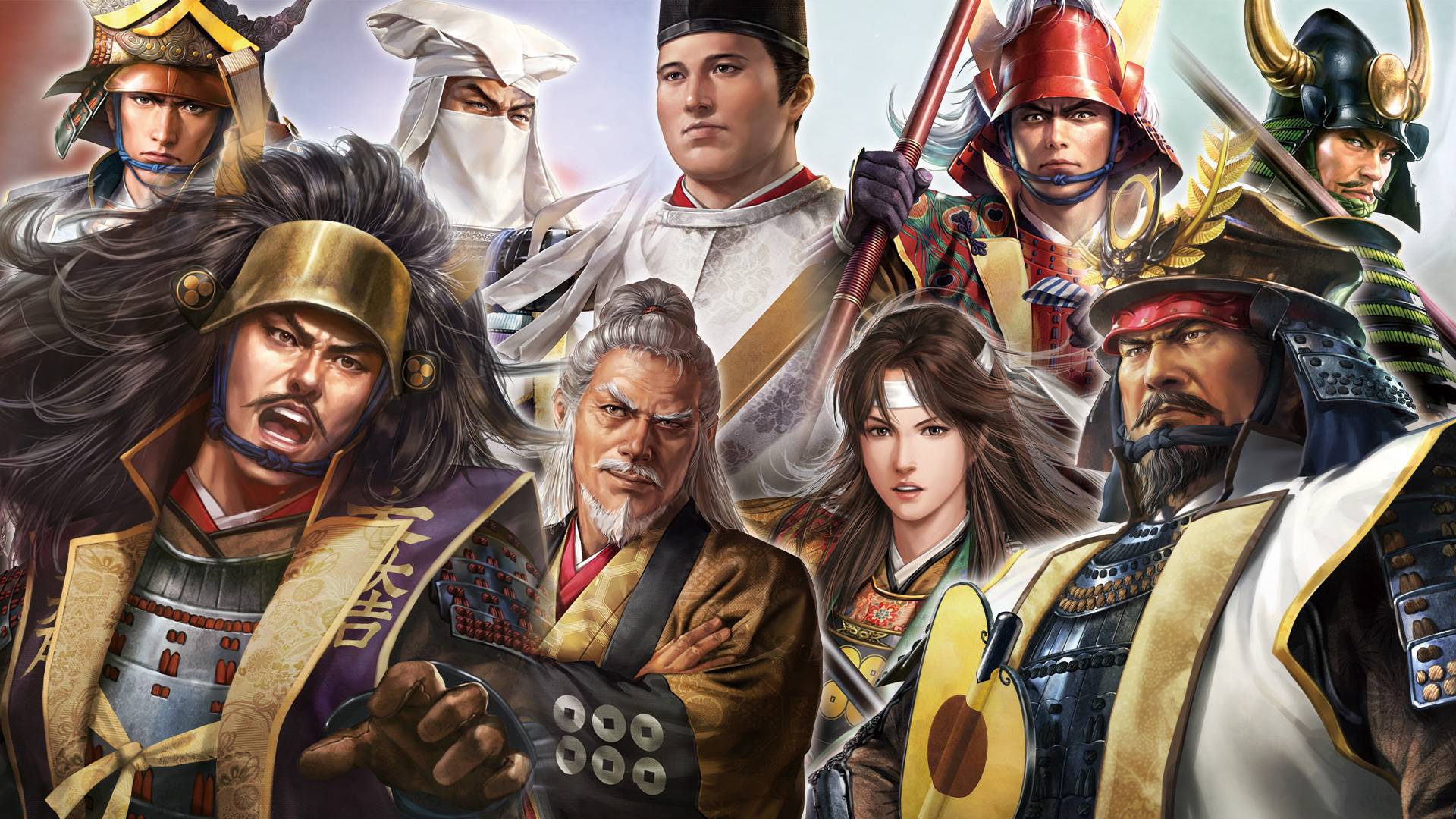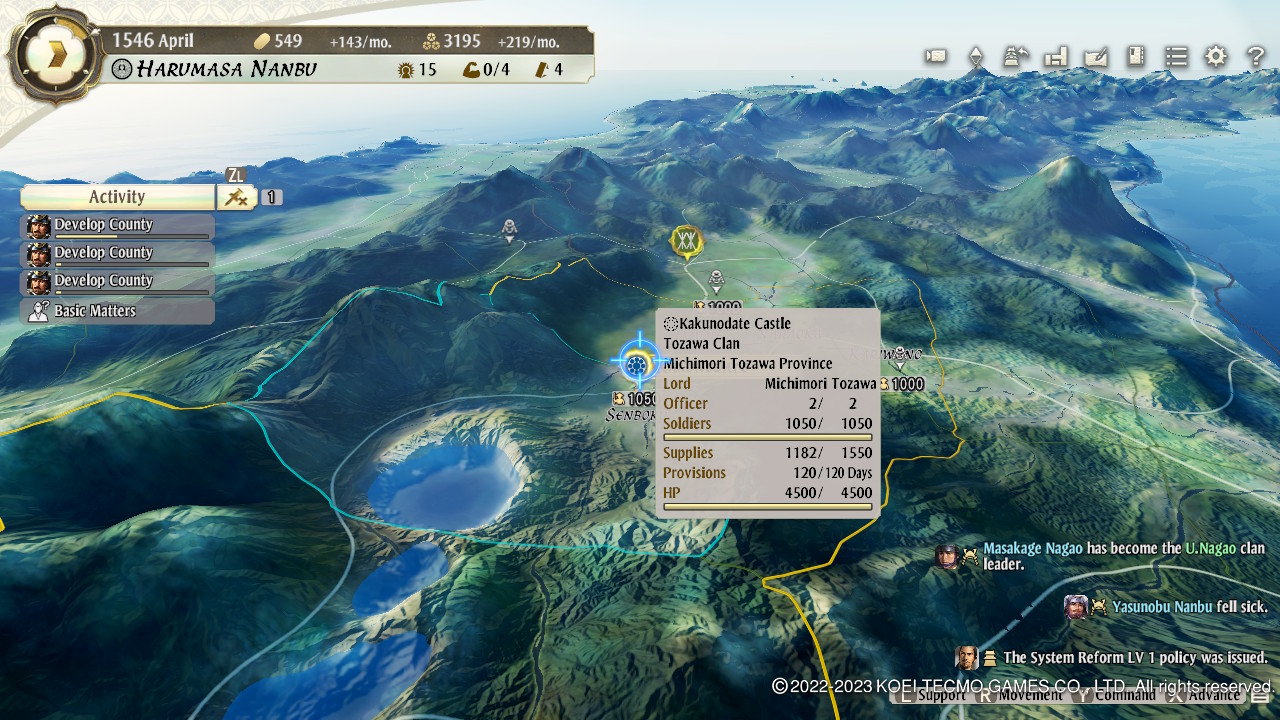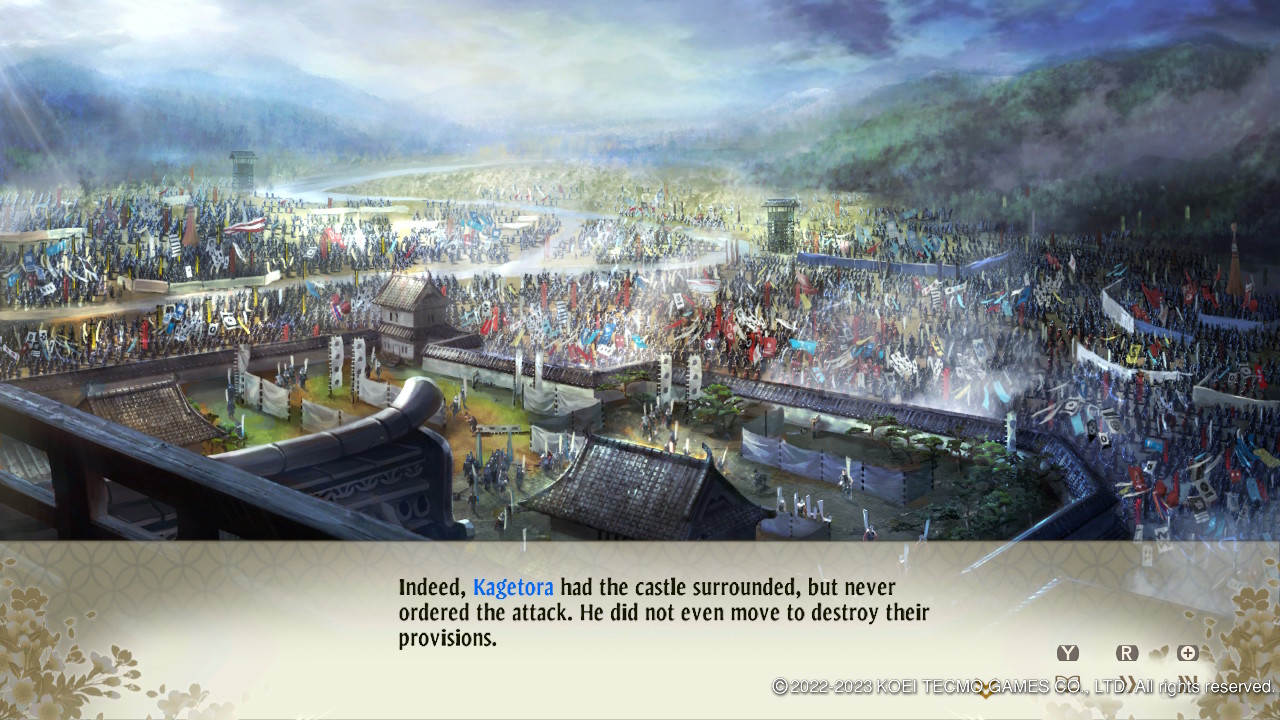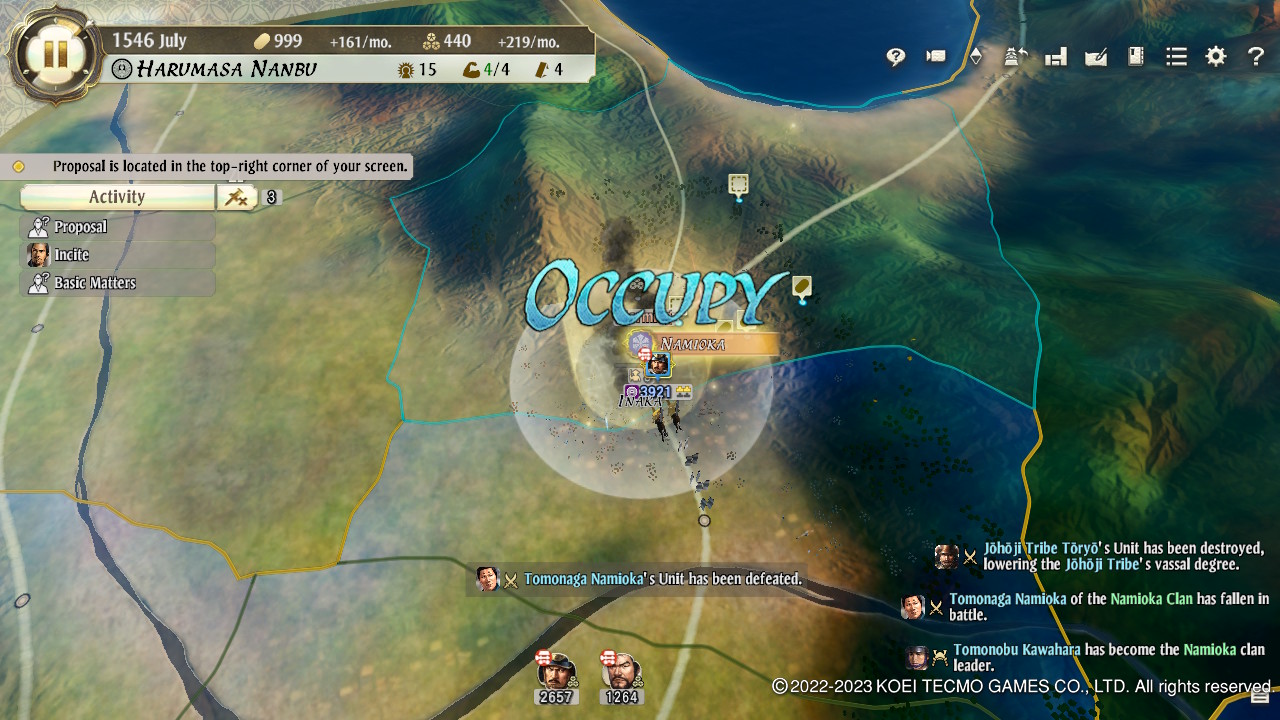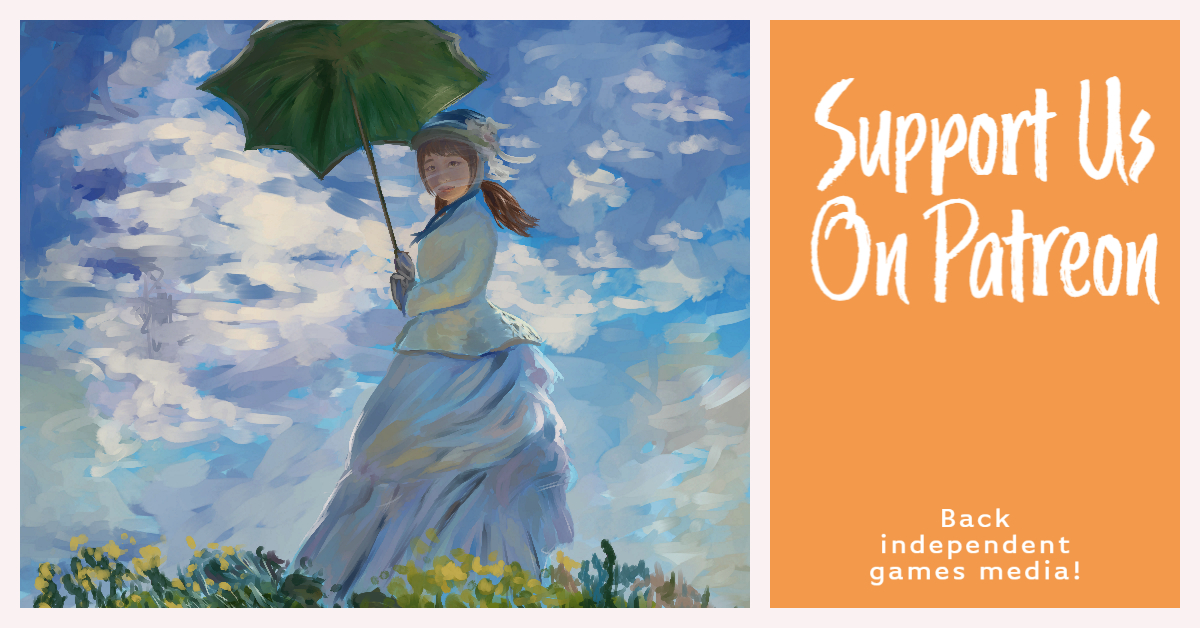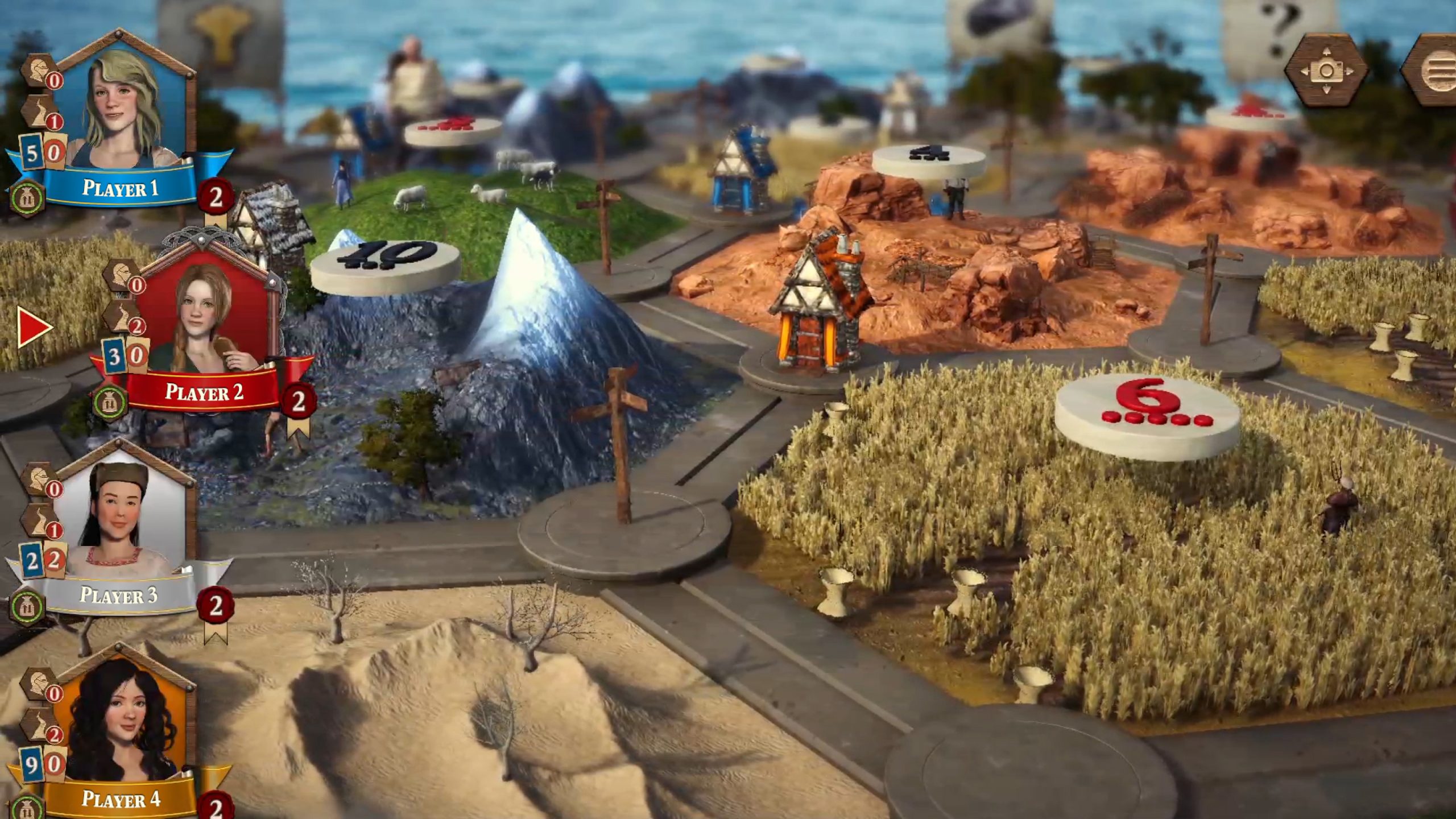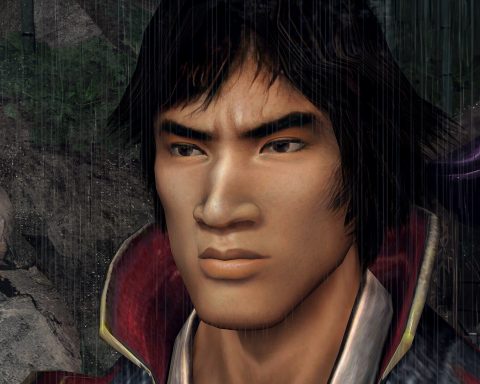Nobunaga’s Ambition has finally landed on the Nintendo Switch. To celebrate the series’ 40th anniversary, Koei Tecmo has gone all out to make this latest entry in the venerable series assessable, story-driven, and interesting, and the team there has comprehensively succeeded.
Related reading: Our interview with the producer and director of this game.
As with all Nobunaga’s Ambition titles, the premise remains the same. The game is set during the Japanese Sengoku period, a lengthy civil war that drew almost every corner of the land into conflict at some point or another. You choose one daimyo (a samurai warlord in control of part of the nation – like a Lord in European history), and try to do better in the game than that leader did in real history. You’re also able to jump in at various points across the era, starting from the initial tussles, to the point where Nobunaga Oda very nearly did take control of the nation, to the massive climatic battle at Sekigahara, which effectively ended the era.
The game is historically authentic at each starting point of each scenario, accurately reflecting the personal strength and capabilities of each daimyo, the armies and generals at their disposal and the resources in their realms. These factors are very significant and do result in imbalances. Selecting Nobunaga Oda, for example, is a good way to ensure that you’re in a powerful position at the start (contrary to the popular myth, Nobunaga was always in a fortuitous position and his story wasn’t really an “underdog-to-tyrant” one). Meanwhile, if you want to really challenge yourself, you can choose a territory with poor leadership or resources. But be warned that even on the “easy” difficulty, you will be in for a tough time when you do that. So much of both conflict and nation-building back then relied on having a large number of very powerful and intelligent retainers, and not every daimyo had the charisma to achieve that. Many other strategy games aim for balance from the outset to provide for a “fair” contest of strategy. Nobunaga’s Ambition is much more interested in seeing if you can handle the vast range of different strategic challenges the leaders of that time dealt with.
If you’ve never played a Nobunaga’s Ambition game before, you’re in luck. This is probably the most accessible of the series to date. It’s still strategically nuanced and rich, so series veterans need not worry about it being “watered down” or less rewarding to master. However, from the user interface, to the onboarding tutorial, and the streamlining of critical systems like the economy, there’s a much gentler learning curve this time around. If you can handle Civilization or Age of Wonders – the “mainstream end” of the grand strategy genre, you can handle this one.
Much of your time will be spent tending to domestic matters rather than warfare. You’re responsible for building up your territories, making sure you have the financial and supply resources to handle military campaigns, and managing the egos of your retainers so they don’t become rebellious. There’s also a lot of diplomacy to deal with, and you’ll need to also handle some more clandestine efforts to deploy spies and ninjas to undermine your territory (and of course you can do the same to your opponents).
However, you can also automate a lot of the day-to-day management of your territories by deploying your retainers to manage parts on their own. Once assigned, they’ll look after the construction and growth of their little territory on their own. The better their leadership statistics, the better they are at this stuff. However, even the lowest-quality leaders can steadily grow a minor province in a far-flung part of your empire so you don’t need to concern yourself with it.
You still have plenty of control, of course. You can marshal the armies, and you get to take direct control of your capital city and main province. There’s enough to manage in there alone. You’re also responsible for managing the overall economy, and selecting the grand and over-arching nation-building policies that have enormous impact. Essentially what this system does is allow you to focus on the big picture stuff, while delegating the micromanagement to the AI-controlled daimyos. This is, frankly, how grand strategy games should be. Real-world leaders rarely felt the need to authorise a new well for a little hamlet they don’t even know the name of. The local leaders and delegated representatives are going to manage that.
Nobunaga’s Ambition comes across as very authentic for this reason. It does feel like you’re managing at a top level, and the decisions that you’re making closely model what you may have read about conditions at the time. This helps ensure that Nobunaga’s Ambition works as an introductory lesson in the history of the period. Obviously, you can do things that didn’t actually happen (like have Nobunaga survive the rebellion against him and go on to claim all of Japan), but along the way, key moments are illustrated with little cut scenes that come on so frequently that at times you’ll almost think that you’re playing a visual novel. These are supported by portrait art that is reasonably authentic (so, not the outlandish designs of the sister Samurai Warriors series), and these scenes make sure that you’re following along with every key interaction, death, and battle that occurs, whether your own faction participated in it or not.
These cut scenes can all be ignored if you’re already familiar with the stories, but for newcomers to Sengoku history, these will be enormously useful for wrapping your head around the chaos that flowed across the land at times. It also means that you’re aware of what’s taking place all around the nation, even though you’re only going to be focused on the local area. This is another really nice feature of Nobunaga’s Ambition: Awakening: conquering the entire nation is not the goal (and it wasn’t for the real-world leaders, either). Rather, your task is simply to unite all of your clan’s specific region in Japan. Your focus will be so fixated on the local troubles that there are entire parts of the nation that you’ll never even look at through the game, so those little story sequences provide important context.
Nobunaga’s Ambition has a really useful tutorial that will gently walk you through each key menu and feature in the game. It’s not going to teach you absolutely everything (that would be overwhelming), but it’ll get you to the point where you can figure out the rest for yourself simply through play. The UI is also arranged nicely into a single, elegant “wheel,” with “spokes” that handle sub-options, and it’s very easy and natural to follow. Some of the physical controls seem a bit arbitrary and so the UI isn’t quite as nicely designed as it is on PC, but it won’t take too long to get the hang of things. Just be aware that if you play in handheld mode the text is small for comfort. It’s not unreadable, but it’s one or two font sizes too small for most people’s preferences.
The only part of the game that I didn’t care for much were the battles. These play out in real-time, and there isn’t nearly enough room for tactical manoeuvring within them. The side with the numerical advantage is almost certainly going to win as long as all other things are equal, though defensive structures and the like tend to influence things too far the other way. In fairness, this was true of warfare in the era itself, and really just reflects the fact that the strategy and personalities of the Sengoku era were far more interesting than battlefield tactics. Thankfully those battles occupy just a few per cent of playtime, and so are easy to grin and bear.
With any 4X strategy title, there’s a learning curve, and Nobunaga’s Ambition: Awakening is no different in that regard. There’s so much depth to the strategies, stats, and nation management that it will take some hours to learn your way around. However, an efficient interface and an excellent approach to the historical storytelling make this the most accessible Nobunaga’s Ambition we’ve seen in the series’ 40-year history. What’s more, it’s a genuinely excellent alternative to a textbook for anyone that wants to learn something about a period of warfare every bit as fascinating as the Napoleonic Wars, the Three Kingdoms era of China, the civil war in America, the Roman campaigns or the Mongol conquests.
